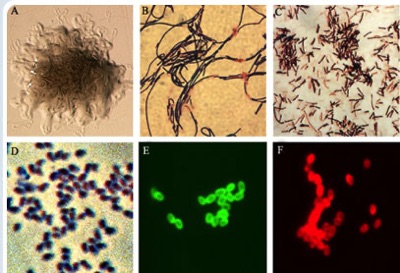Detection of & Protection from Warfare Agents
The proliferation of biological weapons is of grave concern. Notably, some disease-causing agents have been reported to have been disseminated in isolated instances during warfare. Furthermore, in light of the intentional dissemination of anthrax in the aftermath of the disaster of September 11, 2001, it is clear that there is an urgent need for effective reagents for the detection of and therapies to protect against exposure to potentially toxic chemical and biological warfare agents.
We have recently initiated a program within our laboratories aimed at the development of strategies for the detection of and protection against chemical and biological warfare agents. Specifically, we have focused our efforts at Category A Priority Pathogens (e.g., B. anthracis, smallpox, tularemia, botulinum neurotoxins).
Our initial studies focused on the procurement of human antibodies that bind viable, native spores from the aerobic, spore-forming genus Bacillus. Using bio-panning techniques with a phage-displayed naïve human antibody library, single chain antibodies were uncovered that are highly specific versus other species and/or stains of the genus. Furthermore, it was possible to visualize antibody-phage complexed with spores with high resolution and sensitivity using fluorescence microscopy. The direct selection method we employed demonstrates the possibility of discovering human antibodies specific for antigens on the bio-active spore surface. Critically, this strategy serves as a paradigm for obtaining human antibodies against spores of biological warfare agents.
Other research from our laboratories has focused on the development of a "test kit" for the detection of methylphosphonic acid (MPA). Methylphosphonic acid is the natural degradation product of various nerve agents including sarin, soman, and VX. The use of these toxic compounds has been implicated in attacks by Iraq on Kurdish communities and in terrorist activity in the Tokyo subway 10 years ago. Our method for MPA detection is two-fold in nature. First, we employed 3,5-dichlorophenyldiazomethane to modify MPA and thus greatly increase the immunogenicitiy of this compound. Antibodies were elicited to a protein conjugate of the MPA derivative, and from this panel, suitable binding antibodies were isolated. Importantly, the tightest binding antibody, CDC27B4, showed excellent specificity when examined for cross-reactivity with a variety of structurally similar ligands. Using this assay, it was estimated that 170 ± 10 ppb of modified MPA could be detected.

